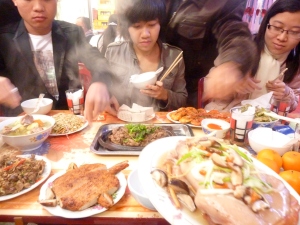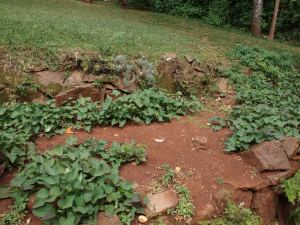It’s Spring! A season I sometimes fail to appreciate, or somehow just seem to miss. It’s a transition time for all of us, the former gang of plot numero 6. Sadly, because none of us were in the neighborhood to cultivate dear old plot #6, we had to let it go. Nonetheless, we hope to continue writing about agriculture and food this summer of 2011…so please check back often.
Becca is transitioning from Arizona back to Lancaster, PA to spend the summer farming on a beautiful piece of land, called Blue Rock Farm. She will be assisting the amazing Farmer, Caitlin Brady, as they cultivate an organic acre of vegetables to feed eager CSA share holders. More to come from Becca soon.
Maya will be making a dramatic exit from the world of office-working-bicycle-commuting-emerging-market-investing-Londoners into the sweltering, fertile land of Punjab in northern India. According to Wikipedia, the name Punjab has Persians origins and means, “The Land of Five Waters”, referring to five rivers that come together to feed the Indus River as it flows Northwest into the Himalayas. Using oral history and working with the Punjabi organization, KVM, she will build a narrative of farmers’ experiences of social, health and environmental changes in Punjab, following the introduction of “Green Revolution” agricultural methods. Maya will be posting updates as she works this summer, so stay tuned.
Natalie completed her Senior Environmental Studies thesis this spring, an oral history project documenting the impacts of the decline of the Sugar Cane Industry on an agricultural community in Hawaii. Now she is officially transitioning into the world of being a grown-up. I visited her in Providence in her new apartment on the West Side and I can assure you that she is making the transition with grace and style. In addition to producing stellar radio pieces for Rhode Island Public Radio, she is working at the beloved Seven Stars Bakery in Providence. Perhaps we will be treated to a post about her recent barrista training class…the secrets of the cappuccino, the americano and the chai latte…?
I (Keally) am back from a semester abroad studying community health issues in Brasil, Vietnam and South Africa. It was an excellent semester full of fabulous new experiences, new friendships and new understanding. I was lucky enough to be part of a case study group that examined issues of food access and agriculture in each of the three countries we visited. I was also lucky enough to make some incredible friends, one of whom is the author of the following post. Cecile (Cece) Ruege, resident of Burlington, VT, cultivator of plants, maker of delicious food, student of food systems, and teacher of nutrition and gardening wrote this piece about Food in Vietnam, a subject which I hope to someday write more about. Please enjoy this piece by Cece describing the gastronomical intensity of eating in Hanoi.
Vietnam is remarkable, by far my favorite landscape- city and countryside both. The streets of Hanoi are dotted with vendors whose products my mouth watered over ever blessed day I strolled down the sidewalk in search of lunch and snacks to fill the physically indolant, however mentally stimulating, hours we spent in the classroom. Across the street from school, there is a bakery that sells sweets which all include at least one of the following 4 or 5 key ingredients seemingly essential in French/Vietnamese fusion pastry- chocolate, buttercream, custard, banana, coconut and nuts. Even after bowls full of Bun Cha- pork (mostly untrimmed bits of fat), kohlrabi, carrots, cayenne pepper, spices and raw stems of cilantro and mint- accompanied by multiple steaming piles of rice noodles served on plastic saucers, I could always make room for chocolate puddles lightly stuffed in shredded coconut. I have even come to embrace “duck sitting on egg,” – not for the faint of heart or the weak of stomach. For those who place themselves under either of the aforementioned categories and have not put two and two together based on the literal translation of Hot Vit Lon, I advise only to steer clear of hard boiled eggs served on the street. Those who are game, just try to remember when you sense the tender bones crushing under the weight of your teeth that Hot Vit Lon is good for your qi.




